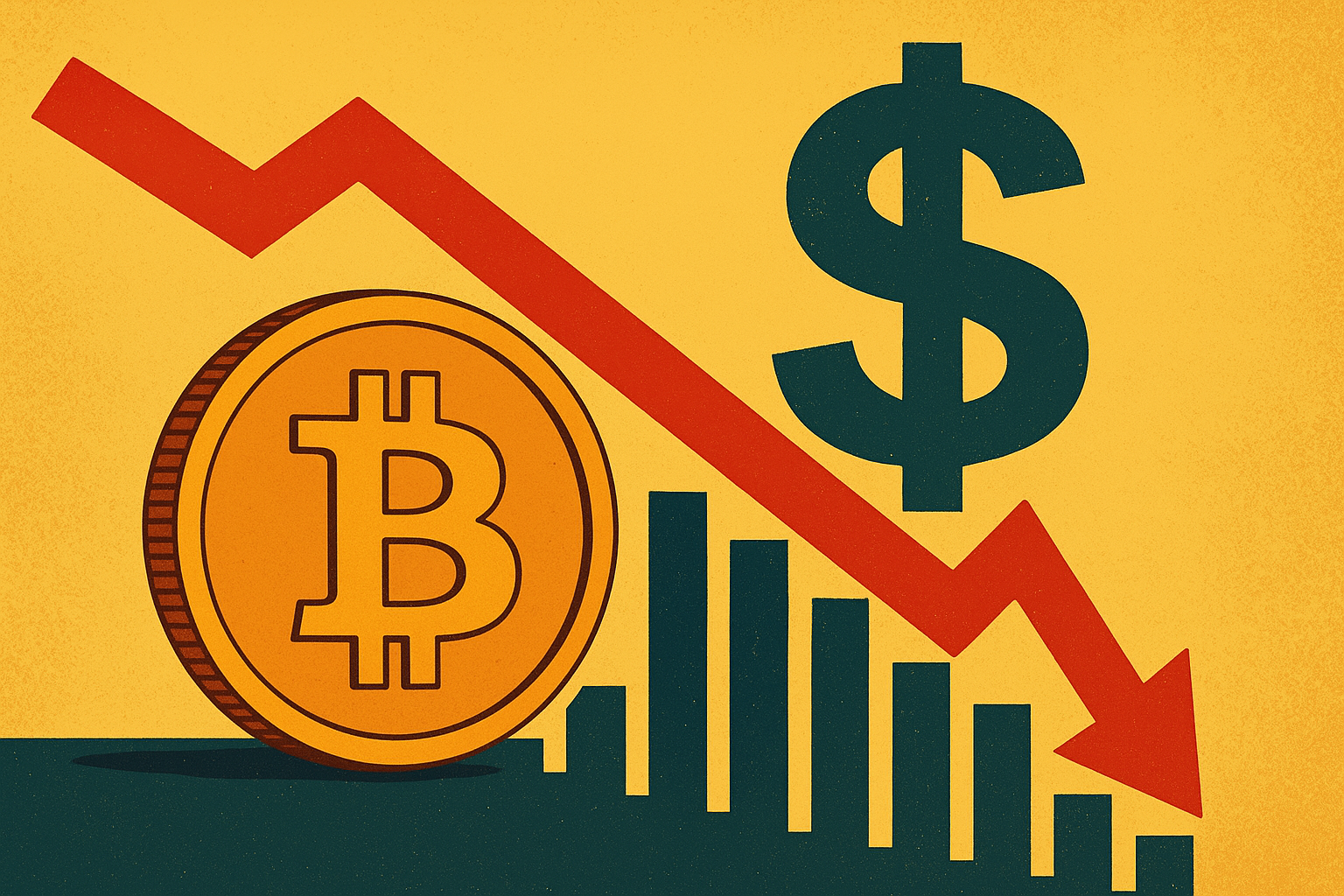Market Nerves Rise as the Dollar Reclaims Strength
Bitcoin stumbled on Thursday, slipping more than 1% to fall below its 200-hour moving average, as traders braced for Federal Reserve Chair Jerome Powell’s remarks on monetary policy. The move comes amid renewed U.S. dollar strength — a familiar nemesis for risk assets — signaling investors’ caution ahead of potential clues about the Fed’s rate trajectory.
The pullback, reported by CoinDesk, reflects a broader cooling in crypto sentiment after weeks of inflows into Bitcoin exchange-traded funds (ETFs) and record-setting highs across the digital asset market. For a market that has been fueled by expectations of policy easing and weaker yields, a firming dollar is an unwelcome reminder that the Fed may not be done talking tough.
Macro Crosswinds Return to the Crypto Market
The renewed dollar rally underscores a central tension in global markets: whether the Fed’s long-awaited pivot toward rate cuts will materialize before year-end. As of Wednesday, the U.S. Dollar Index (DXY) rose above 107, its highest level in nearly two months, reversing some of the weakness that helped drive Bitcoin’s late-summer rally past $125,000.
“The stronger dollar is a reality check for risk markets,” said Marcus Sotiriou, market analyst at GlobalBlock, in a note cited by Bloomberg. “Investors have been pricing in rate cuts too aggressively, and any sign of pushback from Powell could trigger profit-taking across crypto and equities alike.”
Meanwhile, U.S. Treasury yields ticked higher across the curve, with the 10-year note holding near 4.3%, adding to the macro headwinds for non-yielding assets like Bitcoin. As history has shown, a rising dollar tends to weigh on digital assets, commodities, and emerging markets, as global liquidity tightens and funding costs rise.
Why This Matters for Investors
Bitcoin’s sensitivity to macro signals has deepened as institutional participation has grown. According to CryptoQuant, Bitcoin ETFs saw cumulative inflows of $440 million in the past week, led by funds from BlackRock and Fidelity. Yet these flows could reverse quickly if Powell signals that the Fed will “stay higher for longer.”
Historically, Bitcoin’s best rallies have coincided with periods of declining real yields and a weakening dollar. The current environment — marked by lingering inflation and Fed restraint — complicates that narrative. The cryptocurrency’s move below its short-term technical support suggests momentum traders are stepping back, awaiting clarity from Powell’s speech at the Economic Club of New York later today.
Adding to the pressure, risk sentiment across tech and equities remains fragile. The Nasdaq 100 fell 0.8% on Wednesday, with mega-cap stocks like Nvidia ($NVDA) and Apple ($AAPL) losing ground. That risk-off tone is filtering through to crypto markets, where leveraged long positions are being unwound.
Future Trends to Watch
1. Fed Signaling and Real Yields:
Investors should closely watch Powell’s tone on inflation and growth. Any mention of “data dependency” or “extended restraint” could prolong the dollar’s dominance — a bearish signal for crypto in the short term.
2. ETF Flows and Institutional Demand:
Despite the pullback, Bitcoin’s structural story remains strong. Institutional ETF inflows continue to provide a floor for prices, especially as family offices and pension funds explore small crypto allocations. Sustained inflows would indicate long-term conviction, even amid near-term volatility.
3. Technical Support Levels:
Traders are eyeing $118,000 as the next key support zone, with resistance near $125,000. A break below $118K could trigger algorithmic selling, while a rebound above the 50-hour moving average may re-establish bullish momentum.
4. Broader Liquidity Conditions:
Liquidity remains the lifeblood of risk assets. If Treasury yields stabilize and the dollar cools off, Bitcoin could quickly regain footing. But persistent dollar strength — especially alongside elevated yields — may cap upside momentum through October.
Key Investment Insight
The short-term pullback in Bitcoin highlights an important truth for investors: crypto may be evolving, but it still dances to the macro tune. As CoinDesk and Bloomberg both note, the intersection of monetary policy and digital assets has never been tighter. Traders betting on sustained upside should monitor Fed rhetoric and DXY movements as leading indicators.
For long-term investors, this correction may offer a chance to accumulate selectively. Exposure via diversified vehicles — such as spot ETFs or multi-asset funds with crypto allocation — could balance volatility while maintaining upside exposure.
Bitcoin’s resilience through these macro tests remains a testament to its maturing role in global finance. Still, for now, the message is clear: when the dollar speaks, crypto listens.
Stay informed with MoneyNews.Today for in-depth market coverage and actionable investment insights that help you navigate the fast-moving intersection of macro policy, technology, and digital assets.





